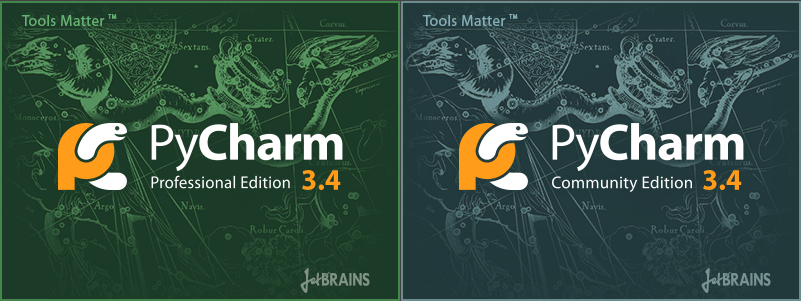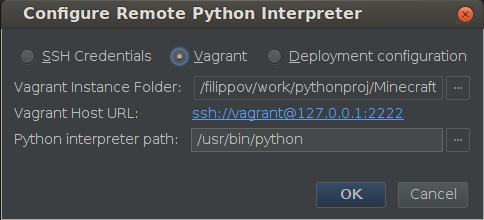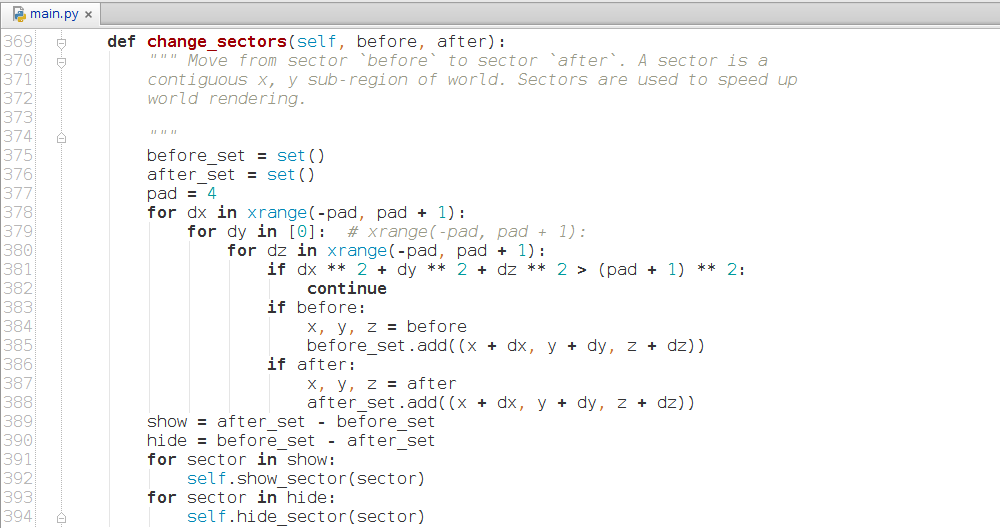Released updated PyCharm 3.4 with new enhanced functionality and improved overall performance.

We are pleased to inform all habrovchanam: a new version of our advanced Python IDE - PyCharm 3.4 has been released! As before, PyCharm 3.4 is available in the paid version of PyCharm Professional Edition and in the free, open source, PyCharm Community Edition.
PyCharm 3.4 is already available for download at this link .
Although the version number seems to be minor, in reality the release is very important. The fact is that PyCharm always followed the version numbering of the Python language. This time, by numbering PyCharm in accordance with the latest version of the Python language - 3.4, we thereby wanted to reflect that PyCharm supports high standards and the latest technologies in their latest versions. So, PyCharm 3.4 supports Python 3.4, Django 1.7 and many other technologies and frameworks.
')
In PyCharm 3.4 you will find improved functionality, improved overall product performance, as well as many new useful features that we hope will boost your productivity a little more.
What's new in this great release:
- The management of Python interpreters has changed. Now you can add a new interpreter or create a virtual environment using virtualenv at the project creation stage, without having to go into the IDE settings.

- Support for development on remote machines has become even more advanced. Now PyCharm distinguishes the types of remote interpreters and divides them into 3 categories:
- interpreters located on hosts accessed via ssh (for example, physical hosts or virtual machines);
- interpreters located on virtual machines created by Vagrant;
- the interpreter residing on the SFTP server for which the deployment configuration is configured.

- We checked PyCharm 3.4 for compatibility with Django 1.7, eliminated the problems that appeared, then checked it again ... and now you can safely use the latest version of this amazing web framework with PyCharm.

- There are new templates for the Python language. These templates now also appear as options for auto-completion. As before, patterns of language constructs can be used as is or modified to fit your needs, as well as create your own.

- The long-awaited functionality of multiple cursors and multiple code selection has finally appeared in the PyCharm code editor. With these functions, you can easily and quickly edit the code simultaneously in several places in the file.

We offer to see this functionality in this short video:
- The already in-depth support of the Vagrant toolkit has become even better.

Now PyCharm automatically recognizes the virtual machines that are created with Vagrant and which have the interpreters necessary for projects, and offers to run them if the interpreter is needed for work, but is temporarily unavailable. In addition, Pycharm better manages various interpreters residing on different virtual machines.
- We have added new automatically proposed fixes for errors in the code.

- The PyCharm graphical debugger has received a substantial amount of improvements. Now you can connect it directly to the interactive Python console. How this is done, you can see here. In addition, the PyCharm debugger now supports Stackless Python.
On the other innovations in WebStorm 8, now also available in PyCharm 3.4, you can read here .
- As you may know, PyCharm includes all the features of WebStorm, either out of the box or by upgrading official free plugins. With the advent of version 3.4, PyCharm users now have the latest WebStorm 8 functionality. One of the main news of this release is improved support for the popular AngularJS framework right out of the box.

You can read more about AngularJS support in this video:
- The IdeaVim plugin has recently been updated, being one of the best existing emulators of the world famous Vim editor. If you are used to editing code in the style of Vim, with the help of this plugin you can seriously gain in productivity by using both the advantages and flexibility of the Vim model and the power of the modern intellectual IDE. The update of the plugin adds support for the commands
:map:sourceand:sort, a new handler for hotkeys, which does not require an additional separate keyboard scheme in the PyCharm settings. Among other things,~/.vimrcno longer used by default,~/.ideavimrcused~/.ideavimrc, in order not to affect the settings of ordinary Vim.
It is worth noting that the IdeaVIm plugin is not included in PyCharm 3.4 by default and must be installed via the embedded plugin manager before using it.
- A new “Github” color scheme has appeared for the PyCharm code editor.

We hope you enjoy this color scheme, which we adopted from the standard Github code viewer. To activate it, you need to go to Settings | Editor | Colors & Fonts and select the “Github color scheme”.
Of course, we did not stop at these improvements and also worked on the overall performance of PyCharm. Changes and improvements have affected different parts of the IDE, and now PyCharm works much faster.
In PyCharm 3.4 we have implemented a number of less noticeable, but important improvements. More information can be found on our official page What's new in PyCharm 3.4 , where you can also download the latest version for your platform.
The differences between PyCharm Professional Edition and Community Edition can be found in the comparison table , which is always on our website.
PyCharm 3.4 Professional Edition is free for all those who purchased a license after May 29, 2013. As before, a 30-day free full-featured trial version is available to everyone.
Program with pleasure!
PyCharm command
Source: https://habr.com/ru/post/224699/
All Articles